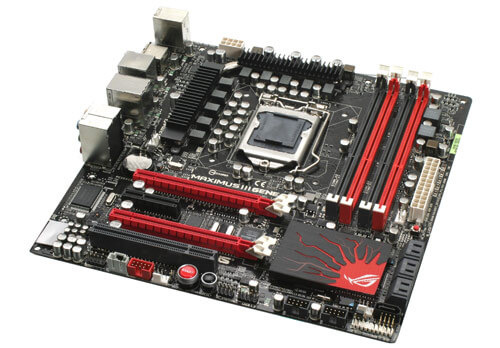After it was first developed in 1997, the demand for micro ATX motherboards has always been on a rise. With space being a major constraint in the office and home environments, the micro ATX motherboards are being preferred over the ATX motherboards to build compact computers. But which micro ATX Motherboard should you choose? This remains a point of concern with the markets over-flooding with a lot of motherboards in the micro ATX form factor. If you are someone who’s stuck in this state, then this article will surely help you to choose the perfect micro ATX motherboard as per your needs.
If you are not very clear about what actually a motherboard is, you can check out the image below, or for in-depth knowledge click here – Beginners Guide To Understand Motherboards.
How You Can Choose The Perfect Micro ATX Motherboard:
- Power:
Generally the more power phases your motherboards has, the better is going to be its performance. The addition of these extra power phases will help your processor and RAM receive cleaner and stable power. You can also ease overclocking due to less pressure on your motherboard transistors.
You would surely need to provide your processor a 4 or 6 phases while providing atleast 2 phases to your RAM controller for effective overclocking. Apart from this, the VRM (Voltage Regulator Module) also plays its part. We recommend you to go for standard company motherboards like Asus, Gigabyte, ASRock or MSI to avoid facing VRM troubles.
- Expansion Slots:
The modern motherboards offer you a lot of inbuilt features like video, audio and network capabilities. This is the reason why the micro ATX though the maximum number of expansion slots it offers than the ATX is less became famous faster. But make sure the micro ATX motherboard you choose has atleast a 2 (for moderate users), 3 or 4 (for high end users) expansion slots. And make sure it is the PCI Express slots and not the outdated PCI slots.
If you are a high-end gamer then make sure these expansion slots support multiple graphic cards.
- RAM slots:
The number of slots of RAM you should choose depends on quite a few factors. First of all question yourself, How much do you use your computer? What purposes you need mostly use your computer for?
If you don’t have an answer then simply go for a 4GB DDR3 RAM, if you are a high end user, there are chances you may need to install more RAM (maybe upto a 16GB) so choose a motherboard that offers you 4 RAM slots. If you merely use your computer for the MS Office stuff and web surfing and low multi-tasking 2GB RAM will be sufficient for you but a 4GB RAM would just be good if there are any others who use your computer.
Also while going for more RAM make sure to know what’s the maximum RAM your computer supports. A 32GB RAM on a system whose maximum RAM capability is a 8GB is just wasting your pockets.
- Other Factors:
Since the most of the motherboards now are available with USB 3.0 technologies, there is no charm in going for a USB 2.0. Also make sure they are present on both the front and back.
This is almost it. If you consider these factors you will surely end up making the best computer. And most importantly it will be what you are. Also the money you have to spend would get cut down.

